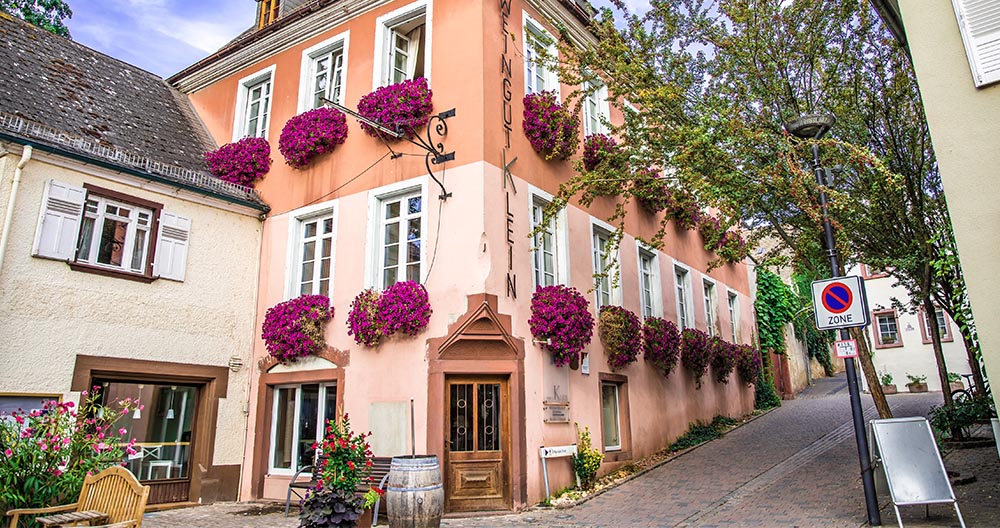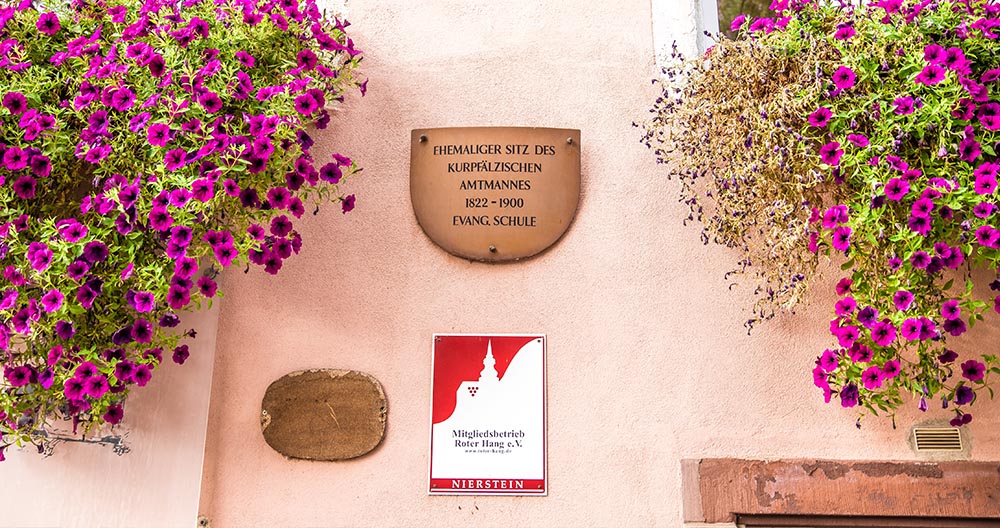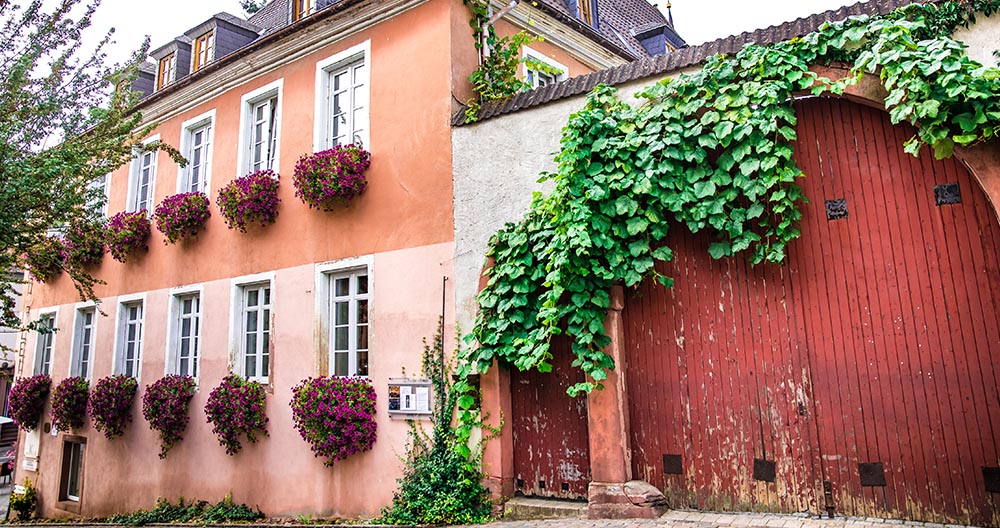


“Hello, old house” is a colloquial phrase to greet a good in friend in Germany.
“Hello, old house!” could also be a proper way to great this building which hosts Klein’s winery today. The premises dates back to the 18th century – the time of the Electoral Palatinate – and has probably seen a lot since then, right here situated between church and market. Hans-Peter-Hexemer of Nierstein’s History Association tells us more:
Anyone who walks past the address “Saalpförtchen 2” today will say: “Nice, there is Klein’s winary, with its nice restaurant where you can sit in the inner courtyard with good a view of the Protestant church. And in fact, in its history this building has always been related to the church somehow. In the 18th century it had been the seat of the Electoral Palatinate bailiff, whose task was to collect and administer the church taxes. Later, in the course of the church union at the beginning of the 19th century, it became a parish and school house. And after that at the beginning of the 20th century it became a winery. In this respect, it has had an interesting and changeful history, from an official building to a more pleasurable building, so to speak.
In fact, on our tour through Nierstein will recognize more often that buildings have had very different owners and purposes over the centuries. Former churches have been transformed to storage buildings. One could gain influence in the nobility and even voting rights by buying houses in Nierstein. Thus a building has most probably always more than just one story.
Our next stop is the Protestant Rectory in the small road left of the churchyard.




“Hello, old house” is a colloquial phrase to greet a good in friend in Germany.
“Hello, old house!” could also be a proper way to great this building which hosts Klein’s winery today. The premises dates back to the 18th century – the time of the Electoral Palatinate – and has probably seen a lot since then, right here situated between church and market. Hans-Peter-Hexemer of Nierstein’s History Association tells us more:
Anyone who walks past the address “Saalpförtchen 2” today will say: “Nice, there is Klein’s winary, with its nice restaurant where you can sit in the inner courtyard with good a view of the Protestant church. And in fact, in its history this building has always been related to the church somehow. In the 18th century it had been the seat of the Electoral Palatinate bailiff, whose task was to collect and administer the church taxes. Later, in the course of the church union at the beginning of the 19th century, it became a parish and school house. And after that at the beginning of the 20th century it became a winery. In this respect, it has had an interesting and changeful history, from an official building to a more pleasurable building, so to speak.
In fact, on our tour through Nierstein will recognize more often that buildings have had very different owners and purposes over the centuries. Former churches have been transformed to storage buildings. One could gain influence in the nobility and even voting rights by buying houses in Nierstein. Thus a building has most probably always more than just one story.
Our next stop is the Protestant Rectory in the small road left of the churchyard.


